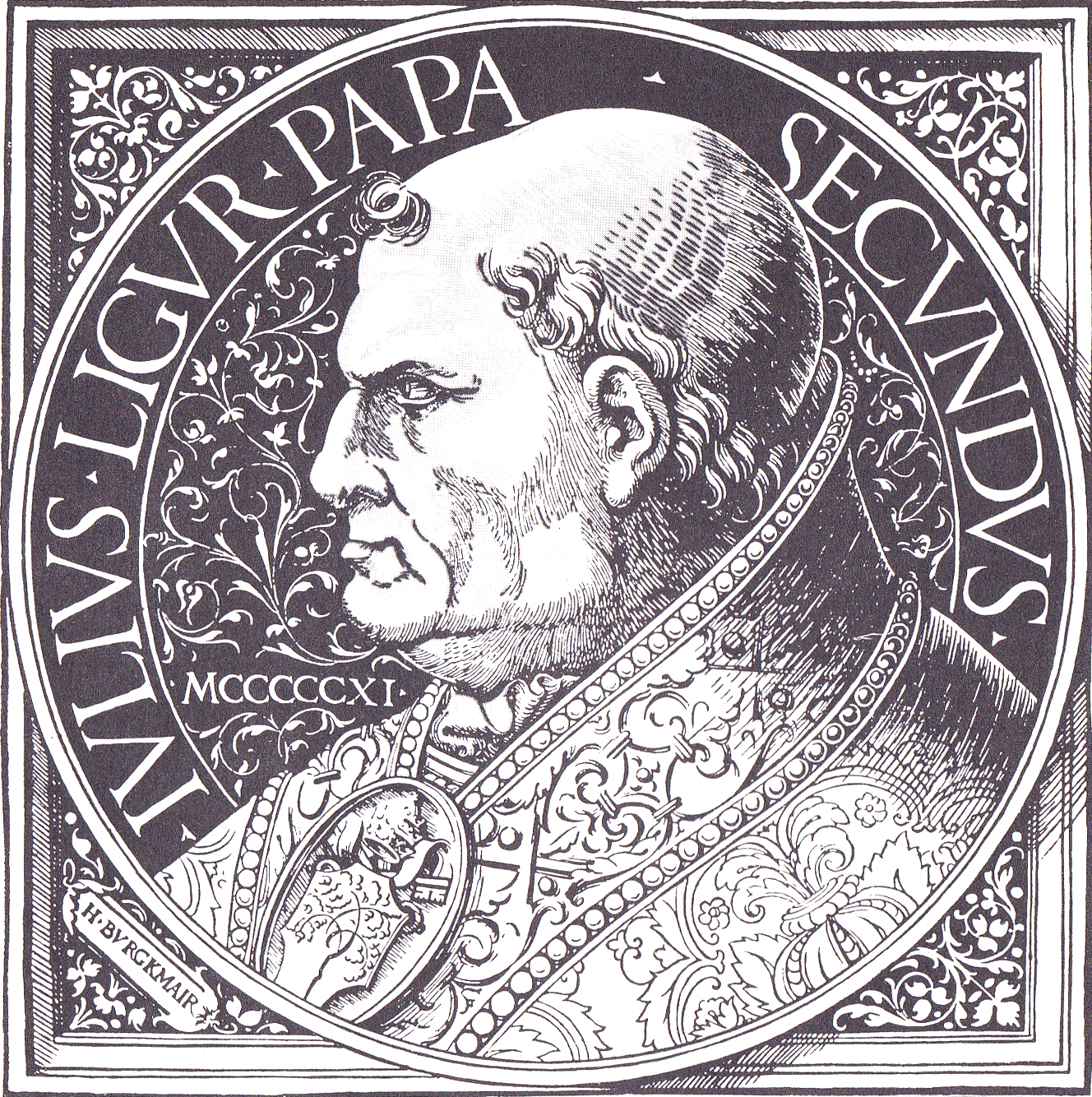|
Georg Marschall Von Ebnet
Georg Marschalk von Ebnet (died 1505) was the Prince-Bishop of Bamberg from 1503 to 1505. Biography Georg Marschalk von Ebnet was a member of the Marschalk von Ebnet family, which derived its name from being hereditary Marshal of Ebnet, now a district of Burgkunstadt. Article on German Wikipedia The cathedral chapter of Bamberg Cathedral elected Marschalk von Ebnet to be Prince-Bishop of Bamberg on 19 September 1503. Pope Julius II confirmed his appointment on 11 December 1503. He died on 30 January 1505 without ever having been consecrated as a bishop A bishop is an ordained member of the clergy who is entrusted with a position of Episcopal polity, authority and oversight in a religious institution. In Christianity, bishops are normally responsible for the governance and administration of di .... References {{DEFAULTSORT:Marschalk von Ebnet, Georg 1505 deaths Prince-bishops of Bamberg Year of birth unknown ... [...More Info...] [...Related Items...] OR: [Wikipedia] [Google] [Baidu] |
Prince-Bishopric Of Bamberg
The Prince-Bishopric of Bamberg () was an ecclesiastical State of the Holy Roman Empire. It goes back to the Roman Catholic Archdiocese of Bamberg, Roman Catholic Diocese of Bamberg established at the 1007 synod in Frankfurt, at the behest of King Henry II, Holy Roman Emperor, Henry II to further expand the spread of Christianity in the Duchy of Franconia, Franconian lands. The bishops obtained the status of Imperial immediacy about 1245 and ruled their estates as Prince-bishops until they were subsumed to the Electorate of Bavaria in the course of the German Mediatisation in 1802. States and territories disestablished in 1802 State The Bishops of Bamberg received the Princes of the Holy Roman Empire, princely title by Emperor Frederick II, Holy Roman Emperor, Frederick II of Hohenstaufen before his deposition by Pope Innocent IV in 1245, whereby the diocese became an Imperial state, covering large parts of the current Bavarian region of Franconia (region), Franconia ("Main Fra ... [...More Info...] [...Related Items...] OR: [Wikipedia] [Google] [Baidu] |
Marshal
Marshal is a term used in several official titles in various branches of society. As marshals became trusted members of the courts of Middle Ages, Medieval Europe, the title grew in reputation. During the last few centuries, it has been used for elevated offices, such as in military rank and civilian law enforcement. In most countries, the rank of Field marshal, Marshal is the highest Army rank (equivalent to a five-star General of the Army (United States), General of the Army in the United States). Etymology ''Marshal'' is an ancient loanword from Old French ''mareschal'' (cf. Modern French ''maréchal''), which in turn is borrowed from Old Frankish *' "stable boy, keeper, servant", attested by Medieval Latin ''mariscalcus'' from a Proto-Germanic ''*maraχskalkaz'' (cf. Old High German ''marahschalh'')p. 93b-283a, T. F. Hoad, ''The Concise Oxford Dictionary of English Etymology'' (Oxford University Press, 1993) being still evident in Middle Dutch ''maerscalc'', ''marscal'', ... [...More Info...] [...Related Items...] OR: [Wikipedia] [Google] [Baidu] |
Burgkunstadt
Burgkunstadt () is a town in the district of Lichtenfels, in northern Bavaria, Germany. It is situated on the right bank of the Main, 15 km west of Kulmbach, and 24 km southeast of Coburg. History The earliest archeological evidence of settlement dates to the 8th century, and the first written record of a settlement dates to April 13, 1059 in the time of Friedrich Barbarossa. The city earned its charter on April 27, 1426 under Prince Frederick Bishop of Bamberg. The town experienced outbreaks of plague in 1312, 1348, 1448, 1473, and 1626. 195 villagers died, approximately one third of the population. The town fell under the sway of Protestantism in 1517 but returned to Catholicism in 1624. The city's residents supported the peasant revolt of 1525, but the ruling diocese ordered the city plundered as punishment, and the city capitulated in June when order was restored. In the Second Margrave War of 1553, the town was occupied by Albert Alcibiades who burned nearly th ... [...More Info...] [...Related Items...] OR: [Wikipedia] [Google] [Baidu] |
Cathedral Chapter
According to both Catholic and Anglican canon law, a cathedral chapter is a college of clerics ( chapter) formed to advise a bishop and, in the case of a vacancy of the episcopal see in some countries, to govern the diocese during the vacancy. In the Catholic Church their creation is the purview of the Pope. They can be ''numbered'', in which case they are provided with a fixed prebend, or ''unnumbered'', in which case the bishop indicates the number of canons according to the ability of diocesan revenues to support them. These chapters are made up of canons and other officers, while in the Church of England chapters now include a number of lay appointees. In some Church of England cathedrals there are two such bodies, the lesser and greater chapters, which have different functions. The smaller body usually consists of the residentiary members and is included in the larger one. Originally, the term "chapter" referred to a section of a monastic rule that was read out daily dur ... [...More Info...] [...Related Items...] OR: [Wikipedia] [Google] [Baidu] |
Bamberg Cathedral
Bamberg Cathedral (, official name Bamberger Dom St. Peter und St. Georg) is a church in Bamberg, Germany, completed in the 13th century. The cathedral is under the administration of the Archdiocese of Bamberg and is the seat of Archbishop of Bamberg, its archbishop. Since 1993, the cathedral has been part of the UNESCO World Heritage Site "Town of Bamberg". It was founded in 1002 by King (and later Emperor) Henry II, Holy Roman Emperor, Heinrich II (Henry II) and consecrated in 1012. With the tombs of Henry II and his wife Cunigunde of Luxembourg, Cunigunde, the cathedral contains the remains of the only imperial couple that was canonized. With the tomb of Pope Clement II (1005–1047) it also contains the only papal grave in Germany, and north of the Alps. After the first two cathedrals burned down in the 11th and 12th centuries, the current structure, a late Romanesque architecture, Romanesque building with four large towers, was built in the 13th century. The cathedral i ... [...More Info...] [...Related Items...] OR: [Wikipedia] [Google] [Baidu] |
Pope Julius II
Pope Julius II (; ; born Giuliano della Rovere; 5 December 144321 February 1513) was head of the Catholic Church and ruler of the Papal States from 1503 to his death, in February 1513. Nicknamed the Warrior Pope, the Battle Pope or the Fearsome Pope, it is often speculated that he had chosen his papal name not in honor of Pope Julius I but in emulation of Julius Caesar. One of the most powerful and influential popes, Julius II was a central figure of the High Renaissance and left a significant cultural and political legacy. As a result of his policies during the Italian Wars, the Papal States increased their power and centralization, and the office of the papacy continued to be crucial, diplomatically and politically, during the entirety of the 16th century in Italy and Europe. In 1506, Julius II established the Vatican Museums and initiated the rebuilding of the St. Peter's Basilica. The same year he organized the famous Swiss Guard for his personal protection and commanded a su ... [...More Info...] [...Related Items...] OR: [Wikipedia] [Google] [Baidu] |
Consecrated
Sacred describes something that is dedicated or set apart for the service or worship of a deity; is considered worthy of spiritual respect or devotion; or inspires awe or reverence among believers. The property is often ascribed to objects (a " sacred artifact" that is venerated and blessed), or places (" sacred ground"). French sociologist Émile Durkheim considered the dichotomy between the sacred and the profane to be the central characteristic of religion: "religion is a unified system of beliefs and practices relative to ''sacred things'', that is to say, things set apart and forbidden." Durkheim, Émile. 1915. '' The Elementary Forms of the Religious Life''. London: George Allen & Unwin. . In Durkheim's theory, the sacred represents the interests of the group, especially unity, which are embodied in sacred group symbols, or using team work to help get out of trouble. The profane, on the other hand, involve mundane individual concerns. Etymology The word ''sacred'' d ... [...More Info...] [...Related Items...] OR: [Wikipedia] [Google] [Baidu] |
Bishop
A bishop is an ordained member of the clergy who is entrusted with a position of Episcopal polity, authority and oversight in a religious institution. In Christianity, bishops are normally responsible for the governance and administration of dioceses. The role or office of the bishop is called episcopacy or the episcopate. Organisationally, several Christian denominations utilise ecclesiastical structures that call for the position of bishops, while other denominations have dispensed with this office, seeing it as a symbol of power. Bishops have also exercised political authority within their dioceses. Traditionally, bishops claim apostolic succession, a direct historical lineage dating back to the original Twelve Apostles or Saint Paul. The bishops are by doctrine understood as those who possess the full Priest#Christianity, priesthood given by Jesus in Christianity, Jesus Christ, and therefore may ordain other clergy, including other bishops. A person ordained as a deacon, pri ... [...More Info...] [...Related Items...] OR: [Wikipedia] [Google] [Baidu] |
Veit Truchseß Von Pommersfelden
Veit Truchseß von Pommersfelden (died 1503) was the Prince-Bishop of Bamberg from 1501 to 1503. Biography Veit Truchseß von Pommersfelden's family name ("Truchseß von Pommersfelden") came from a court office that the family held in Pommersfelden, with the title becoming an integral part of the family name. Article from German Wikipedia The cathedral chapter of Bamberg Cathedral elected Truchseß von Pommersfelden to be Prince-Bishop of Bamberg on 3 April 1501, with Pope Alexander VI affirming his appointment on 7 May 1501. He died on 7 September 1503 without ever having been consecrated as a bishop A bishop is an ordained member of the clergy who is entrusted with a position of Episcopal polity, authority and oversight in a religious institution. In Christianity, bishops are normally responsible for the governance and administration of di .... References 1503 deaths Prince-bishops of Bamberg Year of birth unknown {{Germany-RC-bishop-stub ... [...More Info...] [...Related Items...] OR: [Wikipedia] [Google] [Baidu] |
Georg Schenk Von Limpurg
Georg Schenk von Limpurg (1470–1522) was the Prince-Bishop of Bamberg from 1505 to 1522. Biography Georg Schenk von Limpurg was born in Obersontheim in 1470. He was elected Prince-Bishop of Bamberg on 13 February 1505, with Pope Julius II confirming his appointment on 18 April 1505. He was consecrated as a bishop by Kaspar Preiel, auxiliary bishop of Bamberg, on 20 October 1505. In 1507, he appointed Johann of Schwarzenberg to reform the law of Bamberg; Johann of Schwarzenberg drafted the ''Halsgerichtsordnung'' (Procedure for the judgment of capital crimes) of Bamberg (also known as the ''Bambergensis''), which would later form the basis of the ''Constitutio Criminalis Carolina'' (1530–32). Article on German Wikipedia Schenk von Limpurg was a trusted adviser of Maximilian I, Holy Roman Emperor, particularly at the 1518 Imperial Diet held in Augsburg, where the major topic of discussion was Martin Luther. He died in Altenburg, Bamberg, on 31 May 1522. He is buried ... [...More Info...] [...Related Items...] OR: [Wikipedia] [Google] [Baidu] |




